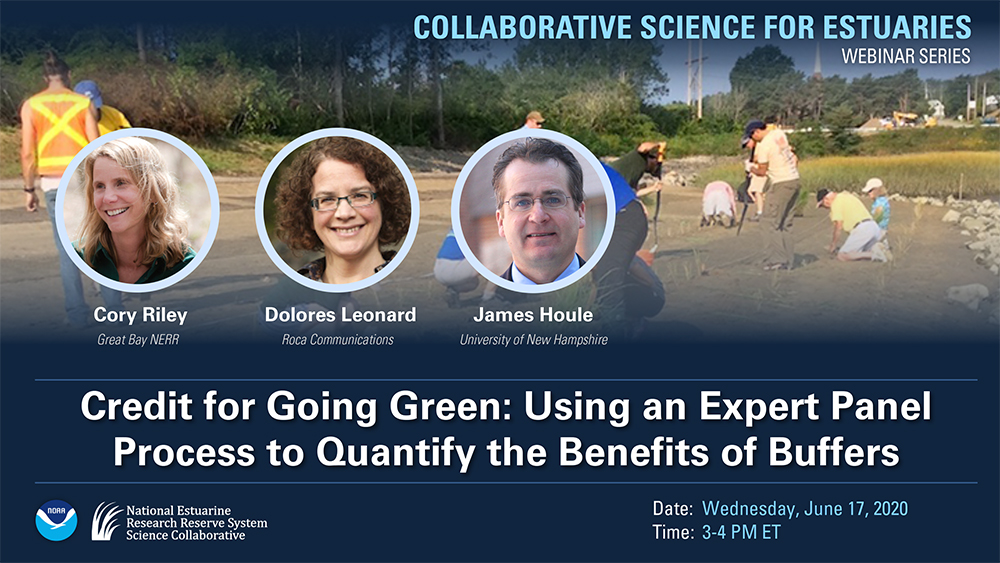 Webinar Description
Webinar Description
Creating vegetated buffers along rivers and bays is a widely recognized strategy to protect water quality while providing other services that benefit ecosystems and communities. However, until recently there was no way to quantify the ability of restored or constructed buffers to reduce pollution, or for communities to receive credit for using buffers under regulatory permits in New England.
Through an expert panel process first modeled in Chesapeake Bay, the Credit for Going Green project team worked with experts to generate science-based recommendations to calculate the pollutant removal rate of buffers in development, redevelopment, restoration, or other land use change projects. Communities can use this information to receive pollutant removal credits for restored or constructed buffers under permits issued by stormwater permit programs. The project has provided municipal staff and boards with the information and tools to better promote buffers as a way to protect water quality, while also enhancing habitat and protecting communities from flooding. Decision makers in New Hampshire plan to apply the expert panel process to other stormwater BMPs in 2021.
In this webinar, members of the project team shared technical findings and lessons learned that could help others apply their methods to generate science-based recommendations for other policy questions. To learn more, download their facilitation guide and tool for calculating pollutant removal rates.
Webinar Summary Products
- Slides and Q&A (PDF)
- Webinar Recording (YouTube)
- Speaker Bios (Webinar Page)